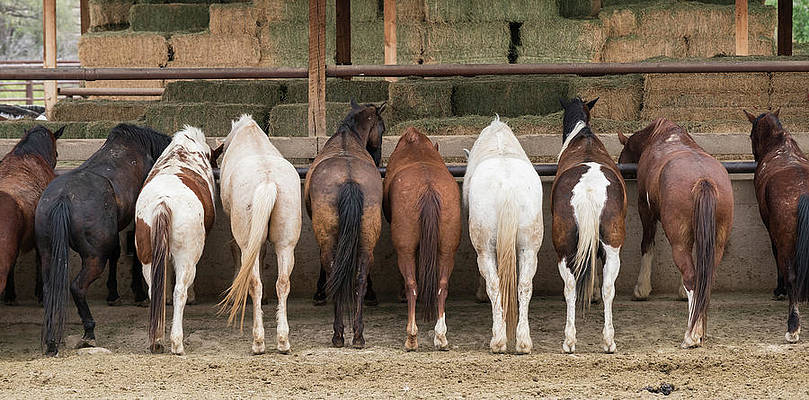Innovation thrives within constraints.
Constraints create the need for questions, creative thinking, and experiments.
But as real as constraints are and as helpful as they can be, don’t simply accept them. Instead, question them, push on them, and explore around them.
But first, find the horse’s a**
How Ancient Rome influenced the design of the Space Shuttle
In 1974, Thiokol, an aerospace and chemical manufacturing company, won the contract to build the solid rocket boosters (SRBs) for the Space Shuttle. The SRBs were to be built in a factory in Utah and transported to the launch site via train.
The train route ran through a mountain tunnel that was just barely wider than the tracks.
The standard width of railroad tracks (distance between the rails or the railroad gauge) in the US is 4 feet, 8.5 inches which means that Thiokol’s engineers needed to design SRBs that could fit through a tunnel that was slightly wider than 4 feet 8.5 inches.
4 feet 8.5 inches wide is a constraint. But where did such an oddly specific constraint come from?
The designers and builders of America’s first railroads were the same people and companies that built England’s tramways. Using the existing tramways tools and equipment to build railroads was more efficient and cost-effective, so railroads ended up with the same gauge as tramways – 4 feet 8.5 inches.
The designers and builders of England’s tramways were the same businesses that, for centuries, built wagons. Wanting to use their existing tools and equipment (it was more efficient and cost-effective, after all), the wagon builders built tramways with the exact distance between the rails as wagons had between wheels – 4 feet 8.5 inches.
Wagon wheels were 4 feet 8.5 inches apart to fit into the well-worn grooves in most old European roads. The Romans built those roads, and Roman chariots made those grooves, and a horses pulled those chariots, and the width of a horses was, you guessed it, 4 feet 8.5 inches.
To recap – the width of a horses’ a** (approximately 4 feet 8.5 inches) determined the distance between wheels on the Roman chariots that wore grooves into ancient roads. Those grooves ultimately dictated the width of wagon wheels, tramways, railroad ties, a mountain tunnel, and the Space Shuttle’s SRBs.
How to find the horse’s a**
When you understand the origin of a constraint, aka find the horse’s a***, it’s easier to find ways around it or to accept and work with it. You can also suddenly understand and even anticipate people’s reactions when you challenge the constraints.
Here’s how you do it – when someone offers a constraint:
- Thank them for being honest with you and for helping you work more efficiently
- Find the horse’s a** by asking questions to understand the constraint – why it exists, what it protects, the risk of ignoring it, who enforces it, and what happened to the last person who challenged it.
- Find your degrees of freedom by paying attention to their answers and how they give them. Do they roll their eyes in knowing exasperation? Shrug their shoulders in resignation? Become animated and dogmatic, agitated that someone would question something so obvious?
How to use the horse’s a** to innovate
You must do all three steps because stopping short of step 3 stops creativity in its tracks.
If you stop after Step 1 (which most people do), you only know the constraint, and you’ll probably be tempted to take it as fixed. But maybe it’s not. Perhaps it’s just a habit or heuristic waiting to be challenged.
If you do all three steps, however, you learn tons of information about the constraint, how people feel about it, and the data and evidence that could nudge or even eliminate it.
At the very least, you’ll understand the horse’s a** driving your company’s decisions.
Endnotes:
- To be very clear, the origin of the constraint is the horse’s a**. The person telling you about the constraint is NOT the horse’s a**.
- The truth is never as simple as the story and railroads used to come in different gauges. For a deeper dive into this “more true than not” story (and an alternative theory that it was the North’s triumph in the Civil War that influenced the design of the SRBs, click here

NIce blog Robyn. great example and I am now a fan of SNOPES.
Hey, I am also switching my primary email to gmail and not cable center, as of the end of the year.
Thanks Jana! Always great to hear from leaders like you that these insights resonate. Snopes is a great site – informative and full of random interesting trivia